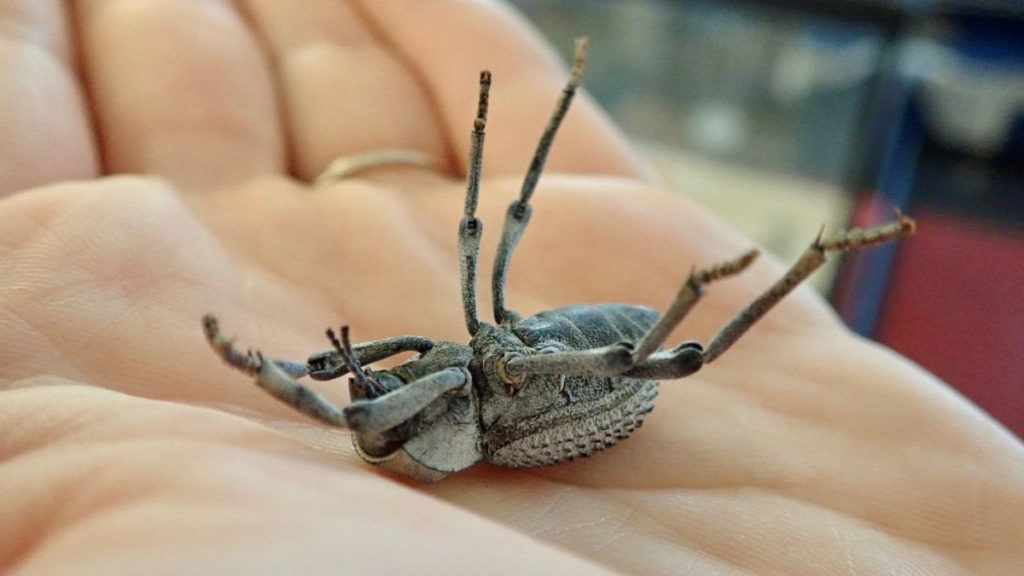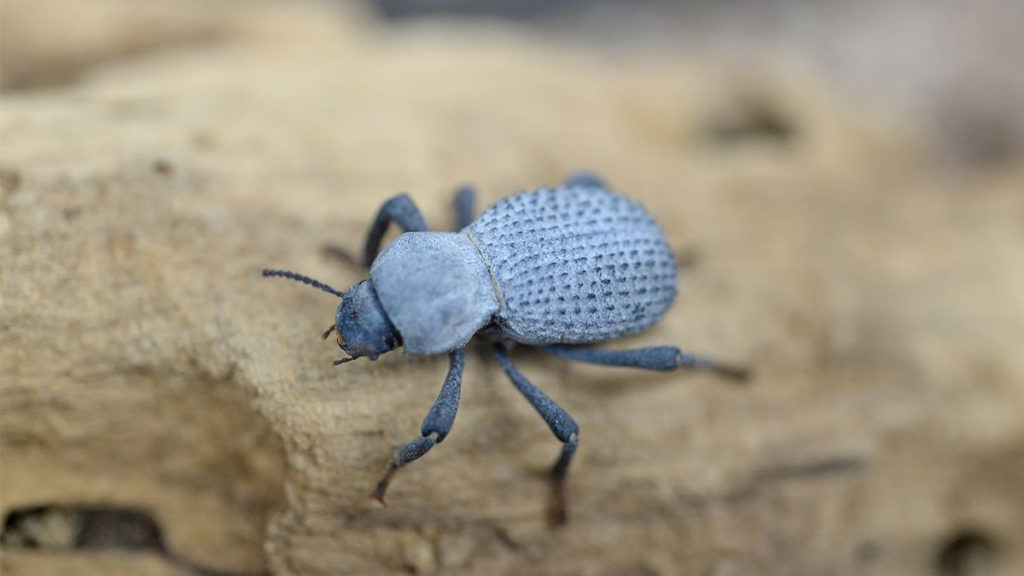Welcome back to the Lab!
As we hit a high point in our summer with both community science projects and our annual summer camps, we now also find ourselves in the midst of a city re-opening after a year-long pandemic, and as such, we. Are. Swamped. (But also loving it). We’ve been revisiting quite a few topics as a result, and since you’re more likely to see us out and about these days, it’s time to reintroduce our most popular and ever-present bug ambassadors: the Blue Death Feigning Beetles.
I truly cannot express how much I love these tough, desert-dwelling beetles. Their latin name, Asbolus verrucosus describes their appearance as “ashy” (Asbolus) and “warty” (verrucosus). I prefer blueberries with legs.

No, she’s not dead; but she would like you to think she is. Asbolus verrucosus is famously known for its defense strategy, hence the common name “death feigning.” Unlike other desert beetle relatives like the Pinacate or “stink beetle,” blue death feigning beetles lack defensive glands and are unable to ward off predators with offensive smells or noxious sprays. They also lack wings, so they are unable to fly away from harm. Instead, they roll over, stick their legs up, and hope the predator pursuing them confuses them for an inedible item.
However, their lack of defensive strategies has a valuable tradeoff. Studies have shown that Asbolus verrucosus has a much higher thermal tolerance than both their stinky beetle brethren and beetle relatives that are capable of flight. Their fused elytra (wing covers), waxy coat, and lack of defensive glands all keep the beetle “sealed” against the dry conditions of the desert.

Water loss poses a critical threat to insects in the desert, but Asbolus verrucosus is perfectly adapted for it. The ashy-blue wax layer is just one extra layer of protection against the heat, protecting them from both UV exposure and water loss. The wax is secreted from their cuticle, and the amount is dependent on ambient humidity. If the humidity is low, the beetle secretes more wax and becomes a lighter shade of blue. If the beetle gets wet, she turns black!
Until next time, thanks for visiting the lab!
Bug Wrangler Brenna
brenna@missoulabutterflyhouse.org
Want to revisit a previous Notes from the Lab issue? Check out our archive! Do you want to request a subject for an upcoming issue? Email me at the address above and put “Notes from the Lab” in the subject line.